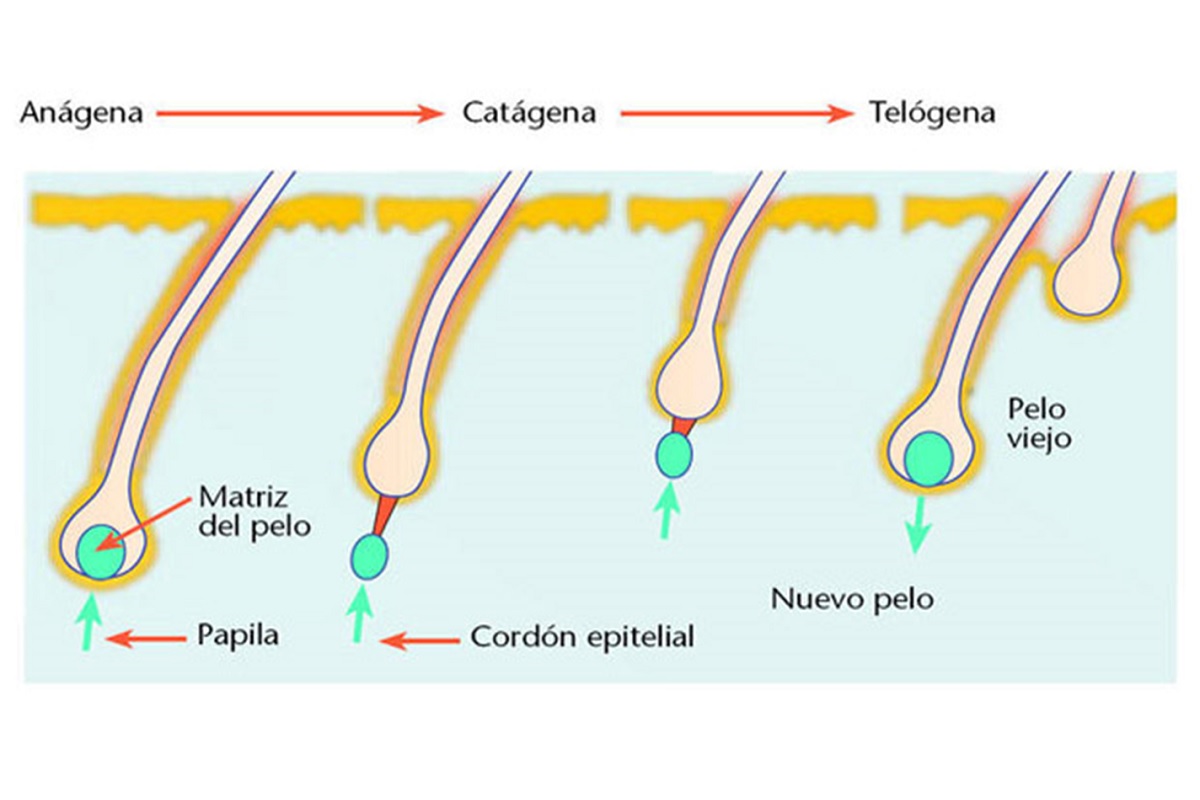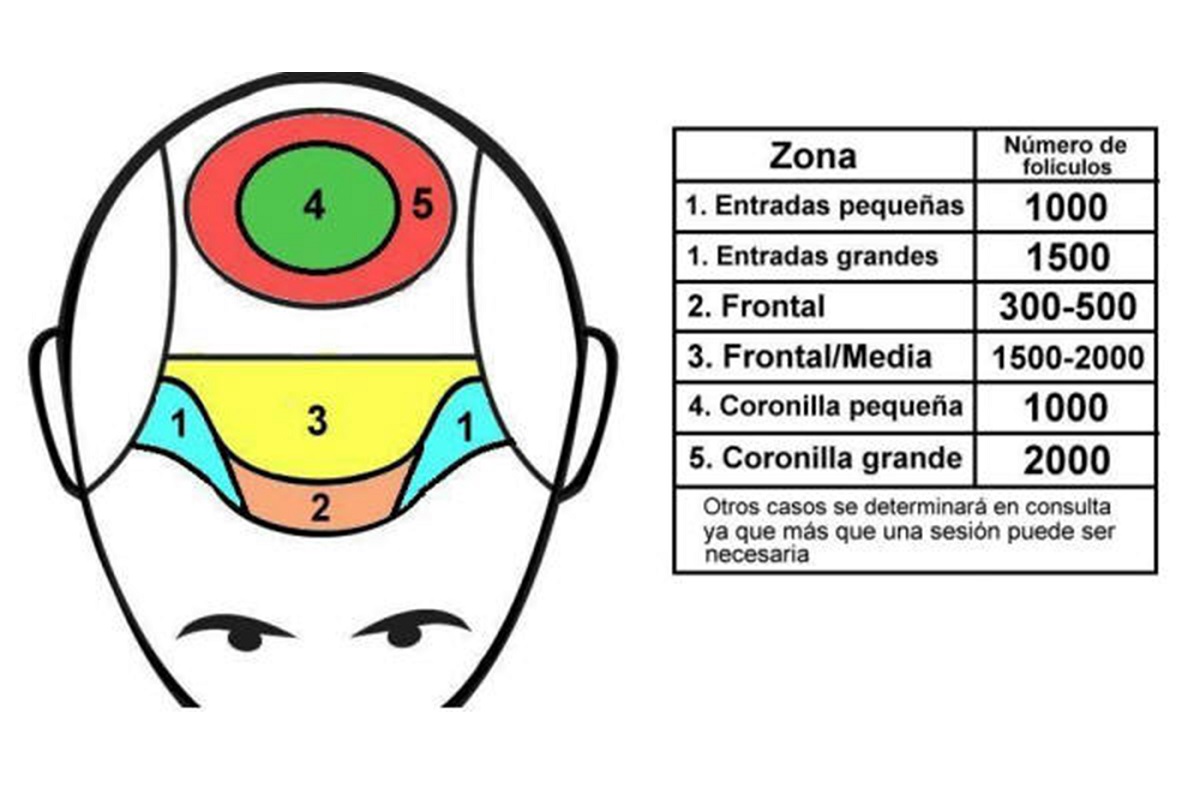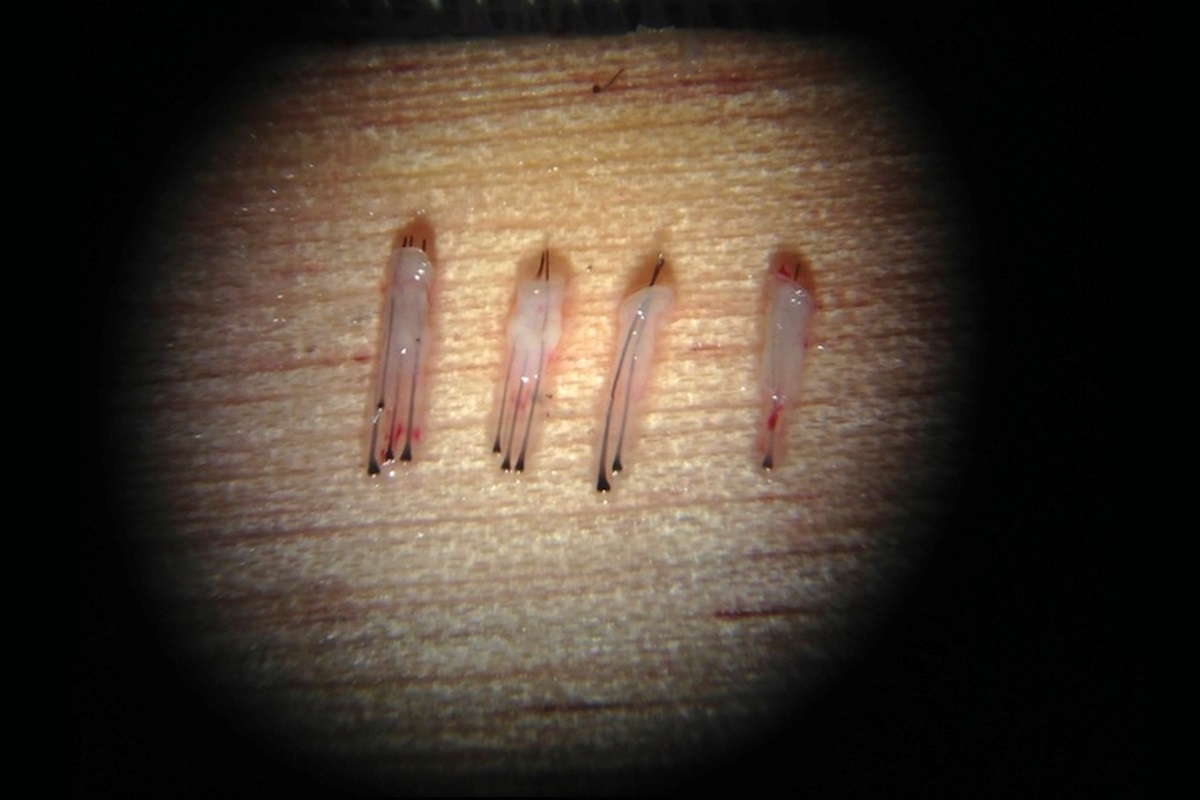FUE technique
Keys and benefits
The hair implant performed with the FUE technique is the most common in our hair clinic. It is one of the most demanded processes when performing a hair graft, since it is one of the least invasive and most effective techniques in this sector.
What is the FUE technique?
The FUE technique is a new hair implant method that consists of a micro-graft of hair whose purpose is the systematic redistribution of the hair follicles. It is characterized by the introduction of small scalp implants with what we call “follicular units”, which are groups of 1, 2, 3 or 4 hair follicles as they are naturally determined. One way of summarizing what this technique consists of is the follicle by follicle.
The procedure followed to perform this technique in our FUE clinic is to anaesthetise the donor area, which is usually the back or side of the scalp, with local anaesthetic to obtain the implants to be grafted onto the recipient areas. Once they have been extracted, they are carefully prepared under the microscope and carefully introduced by means of micro incisions in the bald or alopecic areas.
The benefits of the FUE technique
The FUE technique is one of the most advanced on the hair surgery scene today, and this is largely due to the fact that the advantages provided by this procedure are many.
No scars.
Hair can be implanted without surgery.
Local anesthesia.
Very short recovery time.
Natural and lasting result.
There is no loss of sensitivity in donor areas.
Ability to transplant with this same method even beard, moustache and eyebrows
This technique is executed with a micro-perforating micro-motor called “Trilix”, whose diameter is less than one millimeter (0.8 – 0.5 mm), so the result is very precise.
Procedure of the FUE technique
To carry out this methodology of hair implant in Turkey, firstly, the frontal profile is drawn based on both the experience of the doctor and the wishes and expectations of the patient. The design of the frontal hairline is the cornerstone of hair implant surgery, it must be absolutely natural and aims at the full satisfaction of the patient with his new look.
The implants that are removed from the donor area must be extracted respecting the natural inclination of the follicular units, thus minimizing the risk of damaging the bulb during the procedure. Once we have separated and prepared them, we open small holes in the recipient area using a surgical microdrill, with a diameter of less than 0.5 mm, placing follicle by follicle with the same direction of growth and angle as the original hair. In a mega-session we can implement between 3,000 and 5,000 grafts (7,000-12,500 hairs), depending on the density of the donor site and according to the doctor.
The FUE technique is a hair implant method that does not require any incision, thus obtaining a technique without sutures, without pain and without scars. It is a very popular hair implant in Istanbul, as it is minimally invasive and not very stressful for the hair due to its speed. The affected areas will recover in a short time, between 2 and 7 days.
Request a hair implant study
Contact FUEMEDICALCENTER and book your appointment with Dr. Cinik to start your hair implant treatment in Turkey
Frequently asked questions about the FUE technique and the hair implant in Turkey
The grafted follicles are taken from the back and side areas of the head. These areas are genetically programmed to grow throughout life, as they possess hormone receptors that are not altered by enzymatic hyperactivity. By extracting the follicles from these areas, once they are grafted onto other areas they carry that genetic load, so new hair will continue to grow under those conditions and without the possibility of loss. In short: no, the grafted hair cannot be lost again.
The first step is usually the almost total shaving of the head, since this is the most comfortable measure for the extraction of the follicular units. There is an option not to shave all the hair, in case a patient wants to perform the FUE technique without shaving his head, and in that case the shaved area will be camouflaged with hair curtains.
In the FUE technique there are two clearly differentiated phases:
- In phase 1, the extraction of the follicles is performed, a process that requires great skill, extensive experience and great precision by the surgeon. For this step, cylindrical micro-scalpels of 0.8-0.9mm diameter are used.
- In the phase and two three the follicles are prepared and implemented.
As we have already indicated, in order to carry out the extraction of the follicular units it is necessary to shave the head, as this makes the operation more comfortable. Even so, there are exceptions, cases in which, depending on the length of the hair, shaving is not allowed to be total but partial or even local (it is camouflaged with flaps or bumpers). This is the most common case for women, as it is often unthinkable for a woman to shave her head, even if it is to solve a problem that concerns her, such as alopecia.
There are also cases in which, for work or social reasons, the patient cannot afford such a radical change in her image, and there are even situations in which she does not want her surroundings to know that a hair transplant has been performed.
There are three different ways of shaving:
- Total shaving: the entire scalp is shaved. This is the default shaving, as it is usually the most common practice.
- Partial shaving: only the donor area is shaved, leaving the anterior and superior areas with the same appearance. This makes it easier to match the haircut a few days after the operation, so the change will not be so radical.
- Flaps or bumpers: only some fragments of the donor area are shaved, so the hair that has not been shaved will fall over these areas and hide them. This is usually the preferred type of shave for women.
Most of the time, baldness is due to a condition, not a disease. It arises based on certain genetic characteristics on the part of the patient, and is pronounced by the intervention of androgens, the male sex hormone, hence it is more common in men than in women. Thus, the most frequent cause of alopecia is the so-called androgenic alopecia.
However, there are many other causes by which baldness can start, both definitive and temporary, namely
- Congenital ectodermal dysplasia
- Problems with the immune system
- Dermatitis or skin conditions
- Food-related diseases
- Stress, anxiety or other psychological problems
- Scars from other surgical procedures
Before proceeding with a hair transplant, the first thing to do is to make sure of the cause of the hair loss, study it and grade it in order to make a diagnosis and know what the most accurate technique is.
The solution to alopecia can be approached from two different perspectives: the prevention of hair loss, before the hair is lost, and the recovery of lost hair, a posteriori. In the case of opting for the second option, the most obvious and effective solution is to go to a hair clinic and find out about the Turkish hair implant.
Everyone, both men and women, from the age of majority, are valid candidates for hair implants. Hair grafting techniques are minimally invasive, do not interfere with the patient’s normal routine and do not represent a risk factor for the development of other clinical conditions. However, the surgeon must assess the condition of the scalp to know if an intervention of this nature is really viable.
The main difference is that the hair implant is a medical-surgical treatment in order to replace hair that has already been lost. Other techniques for dealing with alopecia, such as hair regeneration with stem cells, biopeptide hair filler or Minoxidil, are medical treatments that serve to improve and preserve the hair that is still present, not to promote new hair growth.
Hair transplantation is the only efficient way to recover hair. If you want to have more hair or lose the hair you have already lost, it will be necessary to undergo a hair graft, since otherwise that objective is impossible.
To preserve the hair you already have, according to different scientific studies, you can find very effective products to keep your hair stronger and avoid hair loss, such as Finasteride, Minoxidil, regeneration with stem cells or rejuvenation through biopeptides, since all these products are hair cycle stimulators. They are well known products and are used by thousands of patients all over the world, since the results obtained have been clinically tested.
There are other home treatments such as hair lotions, anti-dandruff or anti-seborrhoeic shampoos, or dietary supplements, which can contribute to improving hair quality, but they are not treatments aimed at recovering hair that has already been lost.
Yes. Indeed, the hair micro-graft is a permanent solution to recover hair.
The hairs that are transplanted are taken from the side and back of the head, areas that are not genetically susceptible to hair loss due to the influence of hormones, so wherever these follicles are taken, the new hair will acquire these characteristics and will not be affected by the hormones, that is, it will not fall out again. Thanks to a hair implant more than affordable price you can return to show a strong and beautiful hair permanently.
All those who suffer from androgenic alopecia retain the posterior and lateral areas of the head, so the donor areas of this type of patient are guaranteed. However, in the event that they had no hair in that area, they would not be bald as a result of that condition, but rather it would be a disease.
This hair loss in these areas may be due to conditions that cause baldness (congenital, immunological or psychogenic). In these cases it would be necessary to perform a series of specific medical tests to reach the correct diagnosis, and then assess whether implantation is possible in these situations.
Hair transplantation has been shown to be effective even in treating bald areas of scarred, psychogenic or degenerative origin, so it can also be applied in the aftermath of some scalp pathologies.
The extraction of the donor hair is done by means of the FUE technique, which consists of the extraction of the follicular units. This extraction is performed with a punch or cylindrical perforating tool that sections the hair follicles one by one.
Two different techniques can be used to implant the extracted hair:
- FUE technique, in which case the follicles are treated with PRP before implementation.
DHI technique, which uses implementing feathers for this purpose.
After applying anesthesia in the recipient area, micro incisions are made to implement the follicles. In the FUE technique this procedure is performed with very thin steel sheets that open the microchannels for hair grafting. In the DHI technique, on the other hand, implementers are used, which have hollow needles into which the follicle is inserted. With these needles, the follicle can be placed immediately after its extraction, which makes it spend less time outside the body and take better root. However, this technique is only indicated for certain patients with low levels of alopecia.
On average, up to 5000 follicles, called grafts, can be transplanted in each session. This level of productivity makes it possible to cover a fairly large surface area in a single session, which is why the hair transplant operation is a quick and painless operation that does not interfere with the patient’s routine, as it does not usually need to be repeated.



